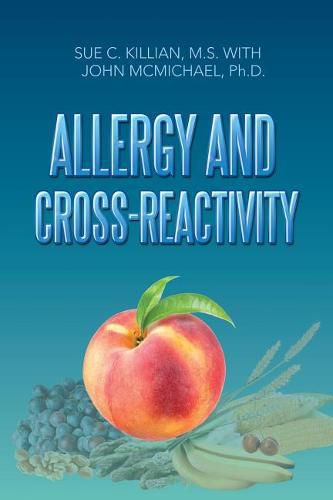Readings Newsletter
Become a Readings Member to make your shopping experience even easier.
Sign in or sign up for free!
You’re not far away from qualifying for FREE standard shipping within Australia
You’ve qualified for FREE standard shipping within Australia
The cart is loading…






This title is printed to order. This book may have been self-published. If so, we cannot guarantee the quality of the content. In the main most books will have gone through the editing process however some may not. We therefore suggest that you be aware of this before ordering this book. If in doubt check either the author or publisher’s details as we are unable to accept any returns unless they are faulty. Please contact us if you have any questions.
This book announces to the reader that allergens are molecules. That’s right. You are not allergic to the entire ragweed plant, the entire dust mite, or the whole cow, just one or more types of allergic molecule within each of those organisms. If you are allergic to a molecule in a dust mite, for example, you might be allergic to shrimp or even tropical fish food. If you are allergic to some pollens, you could also be allergic to nuts, fruits, and some vegetables because they may share those pesky allergenic molecules. Some of these shared allergenic molecules have been identified by scientists, and the reader will benefit by learning where they hide. The reader’s unexplained reactions could be caused by these cross-reactive molecules. This is a situation where a little bit of knowledge is dangerous because cross-reactivity as it is, often briefly mentioned in magazines, could create fear of foods. Alternatively, knowledge about cross-reactive molecules could uncover these specific allergens. Patients could easily avoid these cross-reactive pollen molecules if they knew they were in their foods, thereby eliminating much suffering from allergy. Why would a patient who tested positive to a pollen eat the same allergens in a food? If they knew about cross-reactivity, they would not.
This book explains the allergic response and the many chemicals the body produces in response to an allergic reaction. Allergy is a serious medical condition, and a patient can unintentionally make their allergic reaction much worse by exposure to a similar cross-reactive allergen. Alternatively, in addition to the patient’s chosen medical treatment, knowing about cross-reactivity can provide the patient with additional self-help.
$9.00 standard shipping within Australia
FREE standard shipping within Australia for orders over $100.00
Express & International shipping calculated at checkout
This title is printed to order. This book may have been self-published. If so, we cannot guarantee the quality of the content. In the main most books will have gone through the editing process however some may not. We therefore suggest that you be aware of this before ordering this book. If in doubt check either the author or publisher’s details as we are unable to accept any returns unless they are faulty. Please contact us if you have any questions.
This book announces to the reader that allergens are molecules. That’s right. You are not allergic to the entire ragweed plant, the entire dust mite, or the whole cow, just one or more types of allergic molecule within each of those organisms. If you are allergic to a molecule in a dust mite, for example, you might be allergic to shrimp or even tropical fish food. If you are allergic to some pollens, you could also be allergic to nuts, fruits, and some vegetables because they may share those pesky allergenic molecules. Some of these shared allergenic molecules have been identified by scientists, and the reader will benefit by learning where they hide. The reader’s unexplained reactions could be caused by these cross-reactive molecules. This is a situation where a little bit of knowledge is dangerous because cross-reactivity as it is, often briefly mentioned in magazines, could create fear of foods. Alternatively, knowledge about cross-reactive molecules could uncover these specific allergens. Patients could easily avoid these cross-reactive pollen molecules if they knew they were in their foods, thereby eliminating much suffering from allergy. Why would a patient who tested positive to a pollen eat the same allergens in a food? If they knew about cross-reactivity, they would not.
This book explains the allergic response and the many chemicals the body produces in response to an allergic reaction. Allergy is a serious medical condition, and a patient can unintentionally make their allergic reaction much worse by exposure to a similar cross-reactive allergen. Alternatively, in addition to the patient’s chosen medical treatment, knowing about cross-reactivity can provide the patient with additional self-help.